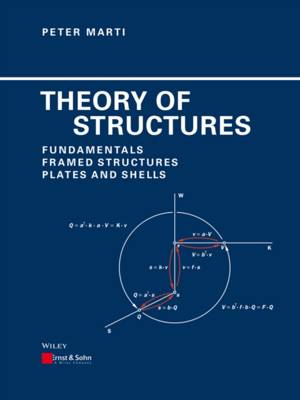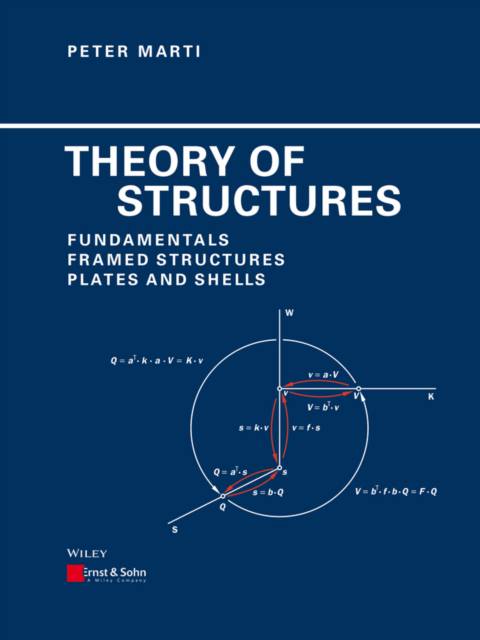
- Afhalen na 1 uur in een winkel met voorraad
- Gratis thuislevering in België vanaf € 30
- Ruim aanbod met 7 miljoen producten
- Afhalen na 1 uur in een winkel met voorraad
- Gratis thuislevering in België vanaf € 30
- Ruim aanbod met 7 miljoen producten
Theory of Structures
Fundamentals, Framed Structures, Plates and Shells
Peter Marti
Hardcover | Engels
€ 209,45
+ 418 punten
Omschrijving
This book provides the reader with a consistent approach to theory of structures on the basis of applied mechanics. It covers framed structures as well as plates and shells using elastic and plastic theory, and emphasizes the historical background and the relationship to practical engineering activities. This is the first comprehensive treatment of the school of structures that has evolved at the Swiss Federal Institute of Technology (ETH) in Zurich over the last 50 years.
The many worked examples and exercises make this a textbook ideal for in-depth studies. Each chapter concludes with a summary that highlights the most important aspects in concise form. Specialist terms are defined in an appendix.
There is an extensive index befitting such a work of reference. The structure of the content and highlighting in the text make the book easy to use. The notation, properties of materials and geometrical properties of sections plus brief outlines of matrix algebra, tensor calculus and calculus of variations can be found in appendices.
This publication should be regarded as a key work of reference for students, teaching staff and practising engineers. Its purpose is to show readers how to model and handle structures appropriately, to support them in designing and checking the structures within their sphere of responsibility.
The many worked examples and exercises make this a textbook ideal for in-depth studies. Each chapter concludes with a summary that highlights the most important aspects in concise form. Specialist terms are defined in an appendix.
There is an extensive index befitting such a work of reference. The structure of the content and highlighting in the text make the book easy to use. The notation, properties of materials and geometrical properties of sections plus brief outlines of matrix algebra, tensor calculus and calculus of variations can be found in appendices.
This publication should be regarded as a key work of reference for students, teaching staff and practising engineers. Its purpose is to show readers how to model and handle structures appropriately, to support them in designing and checking the structures within their sphere of responsibility.
Specificaties
Betrokkenen
- Auteur(s):
- Vertaler(s):
- Uitgeverij:
Inhoud
- Aantal bladzijden:
- 696
- Taal:
- Engels
Eigenschappen
- Productcode (EAN):
- 9783433029916
- Verschijningsdatum:
- 15/04/2013
- Uitvoering:
- Hardcover
- Formaat:
- Genaaid
- Afmetingen:
- 218 mm x 284 mm
- Gewicht:
- 2335 g

Alleen bij Standaard Boekhandel
+ 418 punten op je klantenkaart van Standaard Boekhandel
Beoordelingen
We publiceren alleen reviews die voldoen aan de voorwaarden voor reviews. Bekijk onze voorwaarden voor reviews.










